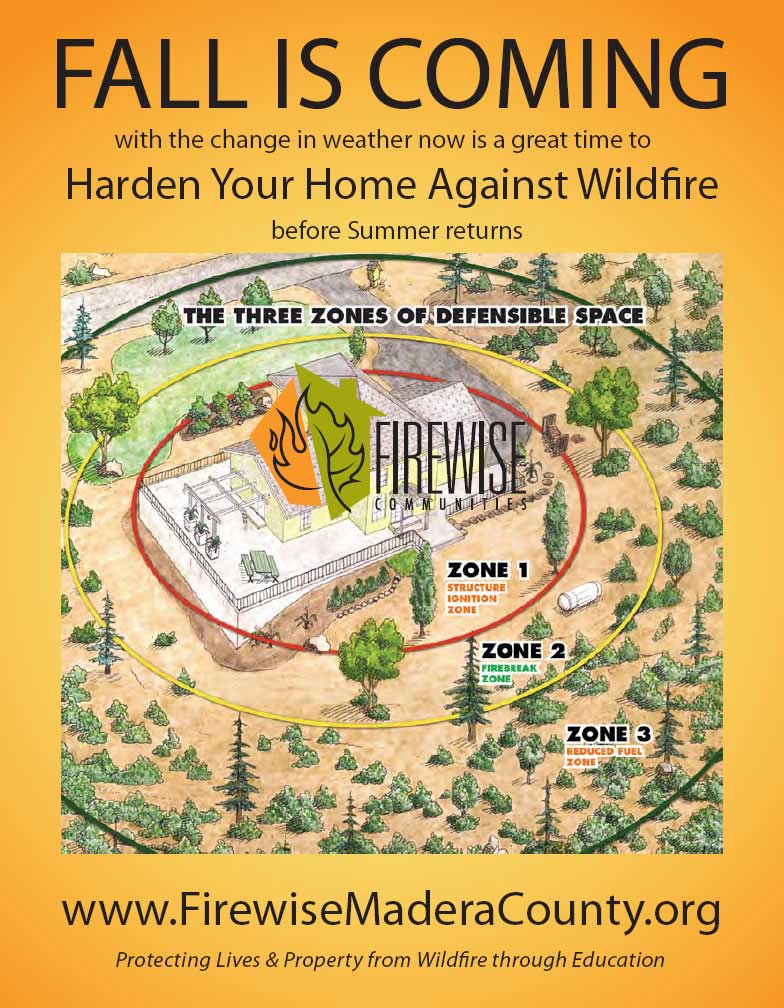
With the change in the weather now is a great time to take steps to protect yourself from wildfire before Summer returns well in advance of fire season or any wildfires.
How to Harden Your Home
Defensible space is desirable and required by law. Defensible space protects firefi ghters during fires, and reduces direct flame impingement potential on your home.
But defensible space will not reduce the combustibility of your actual home structure. To do that, you must ‘harden your home against wildfire‘.
Remember, to a fire, you home is just more fuel. Make sure your home isn’t fuel, or an easily ignitable fuel, and your home surviving a wildfire becomes much more likely, whether defended by firefighters or not.
Hard Enough to Withstand a Brand Blizzard
So plan to prepare your home and structures to be able to withstand wildfire even without firefi ghters present. This means your home needs to be able to withstand a blizzard of embers, or what Jack Cohen refers to as a ‘brand blizzard’.
Think like a fire, or firebrand. Look for easily ignitable little things, like pine needles, leaves, forest litter against siding, on steps, on the roof next to a wall in gutters. Remove them.
Preparing your home to withstand the embers and fl ames of wild fire is second only to your evac plan and go kit. Remember, in the event of a wildfire in your area, always go early and stay safe!
Staying Firewise Action Steps
Below are some actionable reminders to help you harden your home against wildfire. Hardening your home is easy. Let’s get started!
Focus on hardening your home, structures and immediate area around your home. This is called Zone 1 of the Home Ignition Zone.
Assess your situation and always provide defensible space. Flames directly up against your home is a terrible idea.
Simple Stuff
- Now is the time to provide defensible space.
- Cut your brush, check for burn days, and always keep your piles covered so they’ll burn easily and cleanly.
- Only burn on burn days and only if it’s wet enough in general. Use common sense.
- Make sure your chimney has the appropriate screening.
- Routinely remove debris from your roof. Repair any displaced shingles or damage. Replace a wood roof with rated roofing! A rated comp or metal roof is now mandatory. A shake or wood shingle roof is going to all but guarantee your homes destruction in a brand blizzard.
- Routinely check gutters for debris & remove the debris.
- Never stack firewood near your home, even in winter.
- Remove combustible materials from direct contact with your home, even in winter.
- Remove flammables from under decks, even in winter.
- Keep decks clear of flammables, even in winter.
- Move patio furniture & cushions away from your home.
- Create 3 to 5 feet of non-combustible ground completely around your home & structures
As you can see these are all simple, little things. Many are easy and relatively inexpensive. It’s the little things that can make the difference between your home surviving and its total destruction.
Bigger Stuff
- During fire season, close all openings that may allow embers to enter your attic and home.
- Replace older or wood roofing, repair broken shingles, & replace vents with ember resistant vents.
- Replace plastic gutters with metal gutters that can’t burn.
- Enclose and box in your eaves.
- Replace vinyl window screens with metal screens.
- Install noncombustible windows and frames.
- Use dual pane windows, even better, tempered dual pane windows.
- Replace combustible siding with noncombustible siding.
- Consider nonflammable landscaping and keep all foliage clear of structures by 3 to 5 feet.
- Consider patios in instead of wooden decks.
Get in the habit of a Firewise routine, wash, rinse, repeat.
Always have defensible space, but never forget that defensible space alone is not enough!